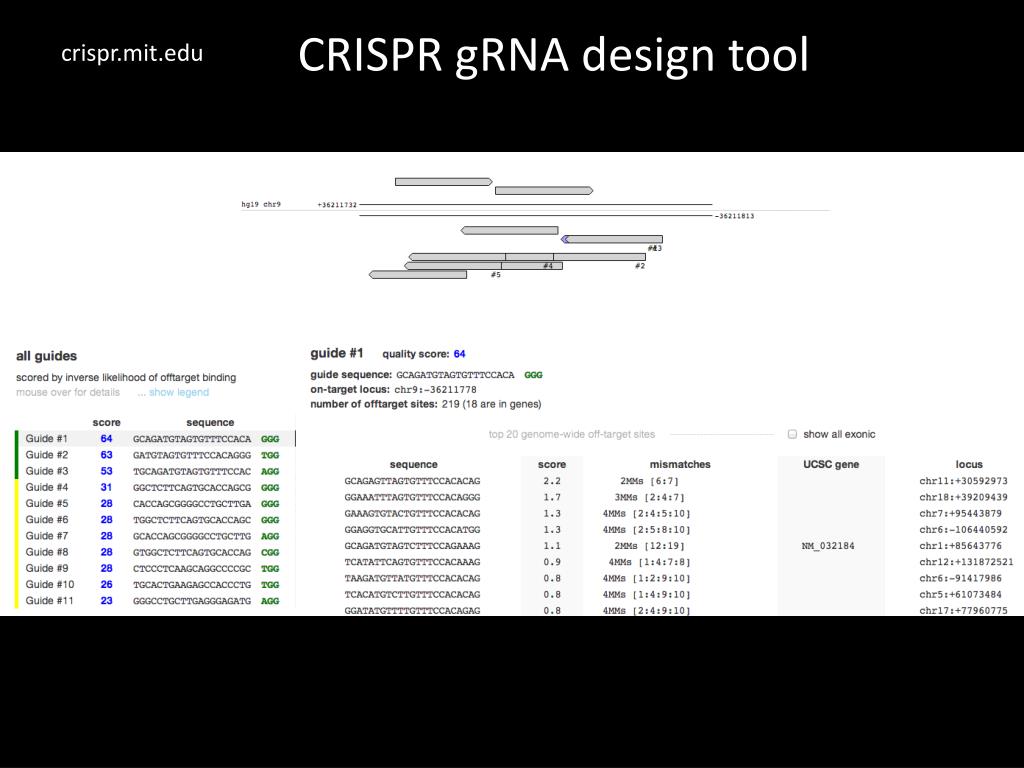Precise Gene Editing: The Promise Of A Novel CRISPR Modification

Table of Contents
Understanding CRISPR-Cas Systems and Their Precision
The CRISPR-Cas system, derived from a bacterial defense mechanism, works like a highly advanced molecular scissors. It uses a guide RNA molecule to target a specific DNA sequence, where the Cas enzyme then cuts the DNA. This allows scientists to precisely remove, insert, or replace DNA segments. However, earlier iterations of CRISPR sometimes suffered from off-target effects—unintended edits at other locations in the genome. Novel CRISPR modifications significantly address this limitation, improving both specificity and efficiency.
Enhanced Specificity with Base Editors
Base editors represent a major improvement in CRISPR technology. Unlike traditional CRISPR, which creates a double-strand break in the DNA, base editors directly convert one DNA base to another without causing a break. This significantly reduces off-target effects.
- Reduced off-target effects: The targeted nature of base editors minimizes unintended edits, enhancing the safety and reliability of gene editing.
- Ability to correct point mutations: Many genetic diseases are caused by single-base changes (point mutations). Base editors are ideally suited to correct these mutations, offering the potential for curative therapies.
- Examples of successful applications in pre-clinical studies: Numerous pre-clinical studies have demonstrated the effectiveness of base editors in correcting disease-causing mutations in various cell and animal models.
Prime Editing: A More Versatile Approach
Prime editing is an even more versatile gene editing technique. It employs a reverse transcriptase enzyme along with the Cas enzyme and a prime editing guide RNA (pegRNA). This allows for a wider range of edits, including insertions, deletions, and all possible base-to-base conversions, without relying on a double-strand break or a donor DNA template.
- Can insert, delete, or replace DNA sequences: Prime editing offers unparalleled flexibility in modifying DNA sequences, enabling the correction of a broader spectrum of genetic mutations.
- Higher editing efficiency than some traditional CRISPR methods: In some cases, prime editing demonstrates higher efficiency than other CRISPR-based approaches.
- Potential for correcting a broader range of genetic mutations: This versatility opens doors to treating a wider variety of genetic disorders previously considered untreatable.
Applications of Precise Gene Editing in Medicine
The potential applications of precise gene editing in medicine are vast and transformative.
Treating Genetic Diseases
Precise gene editing holds immense promise for curing numerous genetic disorders.
- Examples of ongoing clinical trials using precise gene editing technologies: Several clinical trials are underway, exploring the use of CRISPR-based therapies for conditions such as sickle cell disease, beta-thalassemia, and other inherited blood disorders.
- Potential for personalized medicine approaches tailored to individual genetic profiles: Gene editing offers the possibility of personalized therapies, where treatments are specifically designed to address an individual's unique genetic makeup.
- Challenges and limitations in translating pre-clinical success into effective therapies: While pre-clinical results are promising, challenges remain in translating these successes into safe and effective therapies for human patients, including efficient delivery methods and minimizing potential adverse effects.
Cancer Therapy
Precise gene editing is also showing great potential in cancer treatment.
- Disrupting oncogenes to inhibit tumor growth: Gene editing can target and disable oncogenes—genes that drive cancer growth—effectively hindering tumor development.
- Engineering immune cells for improved cancer targeting (CAR T-cell therapy): CRISPR can be used to enhance the effectiveness of CAR T-cell therapy, a form of immunotherapy, by improving the ability of immune cells to target and destroy cancer cells.
- Modifying cancer cells to make them more susceptible to chemotherapy: Gene editing could modify cancer cells, making them more sensitive to chemotherapy drugs and improving treatment outcomes.
Ethical Considerations and Future Directions of Precise Gene Editing
While the potential benefits of precise gene editing are immense, ethical considerations must be carefully addressed.
- Germline editing (editing genes in reproductive cells): Germline editing raises significant ethical concerns, as changes made would be heritable and could have unforeseen consequences for future generations. Strict regulations and ethical guidelines are essential.
- Potential for misuse of the technology: The power of gene editing technology necessitates careful oversight to prevent its misuse, such as for non-therapeutic enhancements or other unethical applications.
- Importance of regulation and responsible research practices: Stringent regulations and ethical frameworks are crucial to ensure responsible research and development of precise gene editing technologies.
- Future research directions: Future research will focus on developing more efficient and safer gene editing tools, expanding the range of treatable diseases, and improving delivery methods, including the use of viral vectors and non-viral approaches.
Conclusion
Precise gene editing, particularly using novel CRISPR modifications like base editing and prime editing, is revolutionizing healthcare. Its potential to treat a wide range of genetic diseases and cancers is truly transformative. From correcting single-base mutations responsible for inherited disorders to enhancing cancer therapies, the applications are vast and rapidly evolving. However, careful consideration of ethical implications and responsible research practices are paramount. Explore the future of precise gene editing and its transformative potential. Discover more about the groundbreaking advancements in CRISPR modification and precise gene editing and the exciting possibilities they offer for the future of medicine.

Featured Posts
-
 Texas Measles New Cases Emerge Separately From Main Outbreak
May 30, 2025
Texas Measles New Cases Emerge Separately From Main Outbreak
May 30, 2025 -
 Californias Coastal Crisis The Impact Of Toxic Algae Blooms
May 30, 2025
Californias Coastal Crisis The Impact Of Toxic Algae Blooms
May 30, 2025 -
 Greve Sncf Le Ministre Annonce T Il L Inevitable
May 30, 2025
Greve Sncf Le Ministre Annonce T Il L Inevitable
May 30, 2025 -
 Augsburger Sportgeschichte Die Geschichte Der Rueckkehr Juedischer Athleten
May 30, 2025
Augsburger Sportgeschichte Die Geschichte Der Rueckkehr Juedischer Athleten
May 30, 2025 -
 Are Post Credit Scenes Worth It A Case Study Marvel Vs Sinner
May 30, 2025
Are Post Credit Scenes Worth It A Case Study Marvel Vs Sinner
May 30, 2025
Latest Posts
-
 Elon Musks Awkward Saudi Encounter With Donald Trump
May 31, 2025
Elon Musks Awkward Saudi Encounter With Donald Trump
May 31, 2025 -
 Trumps Changing Stance On Musk Cnn Data Chief Explains
May 31, 2025
Trumps Changing Stance On Musk Cnn Data Chief Explains
May 31, 2025 -
 Madrid Atp 1000 Girons Victory Over Berrettini
May 31, 2025
Madrid Atp 1000 Girons Victory Over Berrettini
May 31, 2025 -
 Munich Tennis Zverev Battles Griekspoor In Bmw Open Quarter Finals
May 31, 2025
Munich Tennis Zverev Battles Griekspoor In Bmw Open Quarter Finals
May 31, 2025 -
 Zverev Vs Griekspoor Bmw Open 2025 Quarter Final Highlights
May 31, 2025
Zverev Vs Griekspoor Bmw Open 2025 Quarter Final Highlights
May 31, 2025
